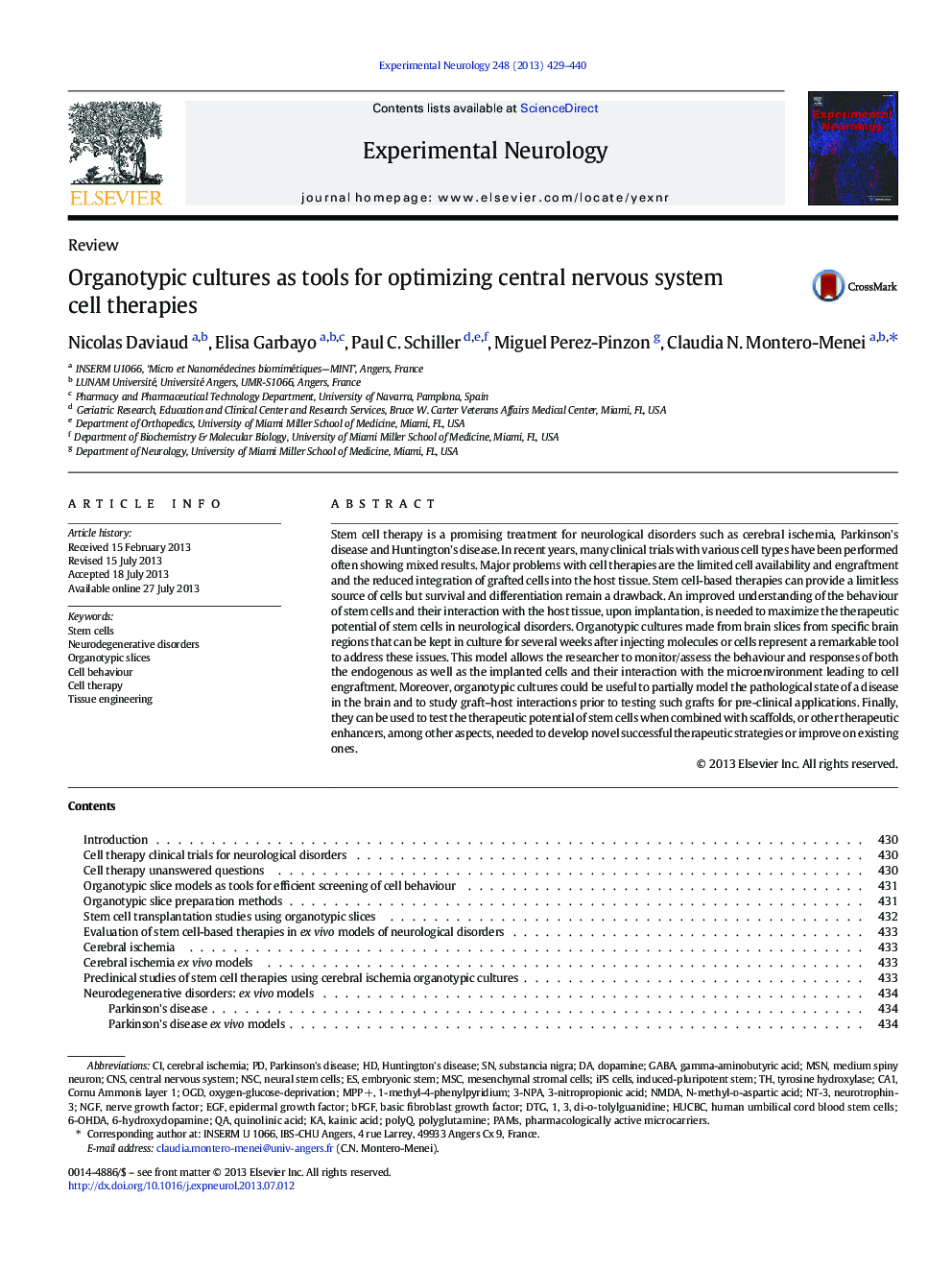| Article ID | Journal | Published Year | Pages | File Type |
|---|---|---|---|---|
| 6018022 | Experimental Neurology | 2013 | 12 Pages |
Abstract
Stem cell therapy is a promising treatment for neurological disorders such as cerebral ischemia, Parkinson's disease and Huntington's disease. In recent years, many clinical trials with various cell types have been performed often showing mixed results. Major problems with cell therapies are the limited cell availability and engraftment and the reduced integration of grafted cells into the host tissue. Stem cell-based therapies can provide a limitless source of cells but survival and differentiation remain a drawback. An improved understanding of the behaviour of stem cells and their interaction with the host tissue, upon implantation, is needed to maximize the therapeutic potential of stem cells in neurological disorders. Organotypic cultures made from brain slices from specific brain regions that can be kept in culture for several weeks after injecting molecules or cells represent a remarkable tool to address these issues. This model allows the researcher to monitor/assess the behaviour and responses of both the endogenous as well as the implanted cells and their interaction with the microenvironment leading to cell engraftment. Moreover, organotypic cultures could be useful to partially model the pathological state of a disease in the brain and to study graft-host interactions prior to testing such grafts for pre-clinical applications. Finally, they can be used to test the therapeutic potential of stem cells when combined with scaffolds, or other therapeutic enhancers, among other aspects, needed to develop novel successful therapeutic strategies or improve on existing ones.
Keywords
EGFPharmacologically active microcarriersMPP +N-methyl-d-aspartic acidNT-3PolyQMSNNMDAOGDNGFDTGMSCPAMS6-Hydroxydopamine6-OHDAbFGFCA1NSC3-NPA3-nitropropionic acidNeurodegenerative disorderskainic acidQuinolinic acidgamma-aminobutyric acidCerebral ischemiaHuntington's diseaseParkinson's diseasetyrosine hydroxylaseCNSDopamineCell behaviourembryonic stemCell therapyiPS cellsStem cellsMesenchymal stromal cellsNeural stem cellscentral nervous systemepidermal growth factornerve growth factorbasic fibroblast growth factorTissue engineeringneurotrophin-3medium spiny neuronPolyglutamineGABA
Related Topics
Life Sciences
Neuroscience
Neurology
Authors
Nicolas Daviaud, Elisa Garbayo, Paul C. Schiller, Miguel Perez-Pinzon, Claudia N. Montero-Menei,
